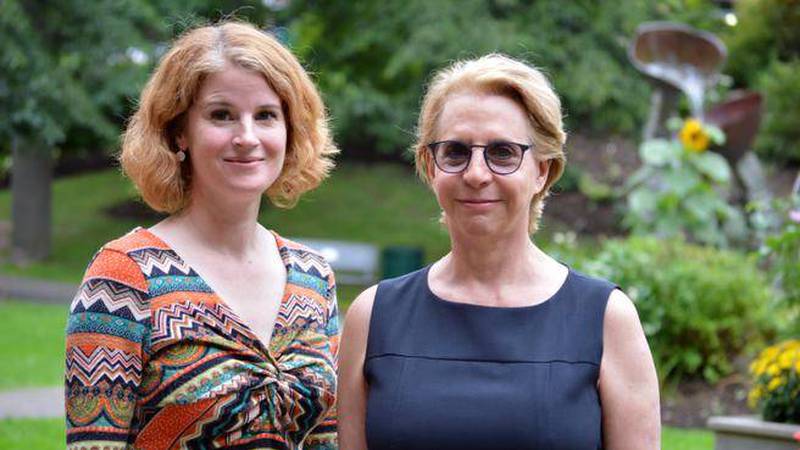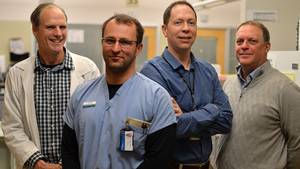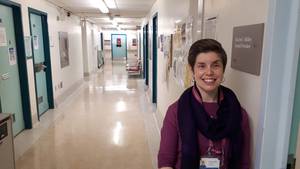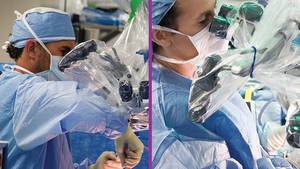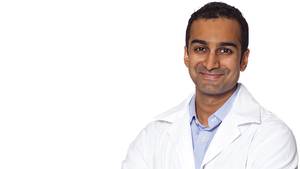Halifax resident Donna Clark became involved with the Palliative and Therapeutic Harmonization (PATH) program at the QEII in 2014. Her husband had been living through a series of health challenges for a number of years.
Impressed and grateful that the program focused on quality of life, Donna says “PATH brings the heart and soul into medicine, not just the body of the person being cared for. I think we all hunger for that kind of health care.”
When a lifetime of health issues begins to impact day-to-day life, it is known as frailty. PATH was founded by Dr. Laurie Mallery and Dr. Paige Moorhouse for people whose condition is not likely to improve, even with the full force of medical intervention.
“We felt this group of people didn't have enough attention to their symptoms, their vulnerability ... there has been a failure to communicate the severity of their illness to the people taking care of them,” says Dr. Mallery.
While frailty has a variety of causes, she says a common example is dementia, a condition that worsens over time and could be exacerbated by drugs or surgery.
“Frailty is associated with poor outcomes from standard-of-care interventions like surgeries, chemotherapy and dialysis,” says Dr. Moorhouse. “So, if we think about overall health, rather than an isolated focus on the one health issue for which an intervention is being proposed, we’ll better understand the potential effect of that treatment on overall health. Sometimes treating one issue with surgery can make others worse.”
For five years now, patients have been referred to the PATH program for a more thorough assessment. Screening for frailty before surgery is one PATH initiative. When the screen shows frailty, the patient and family meet with doctors Mallery, Moorhouse — or colleagues Dr. Nabha Shetty and Dr. Anne Marie Kreuger-Naug — for a very honest, very fulsome conversation, which influences patient/family decisions about whether to pursue scheduled surgeries.
“It turns out people end up making very different decisions in the PATH program,” says Dr. Mallery. “With this process, 80 per cent of people already scheduled for surgery decide not to go through with it.”
The aim of PATH is to consider a patient’s health as a whole and put their options into context - some treatments focus on quality of life and others on life’s duration.
Allan Bagnall was one such patient, who, with the support of his wife Donna Clark, took part in the PATH program two years ago. After losing a kidney to aggressive bladder cancer in the early 2000s, Allan began regular cystoscopes to screen for additional cancers. But the anaesthesia and antibiotics these scopes entailed were increasingly difficult for Allan to tolerate, given his dementia.
“He hated it,” says Donna, herself questioning the purpose of cancer screenings given his deteriorating health.
After their referral to PATH and considerable consultation with Dr. Mallery, Allan discontinued his cystoscopes, instead tailoring his treatment to make him as comfortable as possible.
“We chose medical interventions that gave quality of life but didn’t necessarily extend life,” says Donna. “It gave him time to create memories in his last days. He loved to dance, as an example, so I’d go visit him at the nursing home, put music on and we’d dance. If we continued with interventions, I don’t think his quality of life would have been nearly as good.”
In May 2017, Dr. Mallery and Dr. Moorhouse took steps to expand the reach of the PATH program by presenting at a version of Dragon’s Den at the QEII.
Dragon’s Den is a day of professional development for perioperative staff of the QEII, as well as an opportunity to support innovations in the field with a $50,000 grant from the QEII Foundation. This year’s grant awarded to the PATH program to make frailty information more easily available to practitioners in other departments and hospitals through more streamlined screening and referral to PATH.
“Patients and families value different things at the end of life,” says Dr. Moorhouse. “Some are looking for the longest time, but most people are looking for the best possible quality of life. We can help.”

